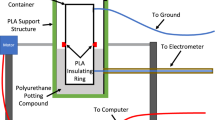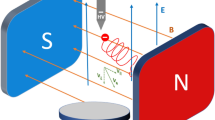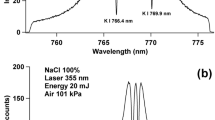Abstract
IT has been found that when an air-stream flows transversely across the gap between two planar electrodes, a large positive-ion current can be collected prior to breakdown by a probe in the path of the emerging air, if the frequency of the applied voltage is sufficiently high.
This is a preview of subscription content, access via your institution
Access options
Subscribe to this journal
Receive 51 print issues and online access
$199.00 per year
only $3.90 per issue
Buy this article
- Purchase on Springer Link
- Instant access to full article PDF
Prices may be subject to local taxes which are calculated during checkout
Similar content being viewed by others
References
Hershey, A. V., Phys. Rev., 56, 908 (1939).
Loeb, L. B., “Fundamental Processes of Electrical Discharge in Gases” 551 (New York: Wiley, 1947).
Charlton, E. E., and Cooper, F. S., Gen. Elec. Rev., 40, 438 (1937).
Warren, J. W., Hopwood, W., and Craggs, J. D., Proc. Phys. Soc., 63, 180 (1950).
Author information
Authors and Affiliations
Rights and permissions
About this article
Cite this article
FATEHCHAND, R. Positive-Ion Formation in Air prior to High-frequency Breakdown. Nature 167, 566–567 (1951). https://doi.org/10.1038/167566a0
Issue Date:
DOI: https://doi.org/10.1038/167566a0
Comments
By submitting a comment you agree to abide by our Terms and Community Guidelines. If you find something abusive or that does not comply with our terms or guidelines please flag it as inappropriate.



